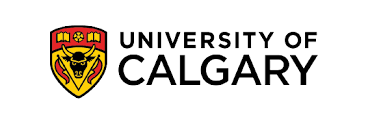University Of Calgary’s Cardiac Surgery Team Performs Unique Heart Bypass Procedure Surgery
Members of Calgary’s minimally invasive cardiac surgery team have another technique to help them deliver world-class cardiovascular care.
The team recently completed the first minimally invasive direct coronary artery bypass (MIDCAB) surgery at Foothills Medical Centre in Alberta. Dr. Daniel Holloway, MD, was the lead surgeon for the procedure.
The delicate surgery required Holloway to graft a blood vessel onto the heart to create a new path for blood to flow around a blocked artery — all while the patient’s heart was still beating.
“Traditionally, bypass surgery has been through full sternotomy with the need for the patient to be on a heart and lung machine,” says Holloway, a clinical associate professor in the Department of Cardiac Sciences at the Cumming School of Medicine. “Now we have a minimally invasive option for certain patients. It’s very satisfying.”
Libin Cardiovascular Institute
Historically, bypass surgery was done through open-heart surgery, called a sternotomy, and required the breastbone to be cut and opened so surgeons could access the heart. The heart was also stopped and a heart and lung bypass machine, which takes over the job of the heart and lungs, used to oxygenate and pump the blood around the body during surgery.
Calgary’s Chris Kennedy, 40, was among the first patients in Alberta to benefit from the minimally invasive option.
His heart problems began in August 2022 when he started having symptoms like nausea, jaw and arm pain and breathing difficulties while on a work trip. Although he was very uncomfortable, Kennedy decided to take some antacids and went about his day.
Several weeks later, the symptoms hadn’t stopped, and a friend finally convinced Kennedy to schedule an appointment with his physician. After several tests, Kennedy got some life-changing news.
“I was told I had a pretty significant blockage in my heart, and that I would require surgery,” says Kennedy.
He was shocked.
“At 40, and being healthy, you don’t expect to have heart problems,” says Kennedy. “I have no family history of heart disease, I don’t have diabetes, and I have never smoked.”
Several months later, Kennedy underwent the MIDCAB single bypass surgery. He was happy to have the new procedure as it cut down significantly on his recovery time when compared to the traditional open-heart operation.
“I received fantastic care,” says Kennedy. “Three days after the surgery, I had regained a lot of my mobility, and I was able to drive just 10 days after my surgery and returned to work.”
Holloway confirms recovery time is quicker with MIDCAB.. The procedure may also result in fewer complications since it is done on a beating heart with no need for a heart-lung bypass machine.
So far six patients have undergone the surgery since January 2023.
Holloway and his colleague, Ganesh Shanmugam, received MIDCAB training at Peter Munk Cardiac Centre at the Toronto General Hospital with Dr. Piroze Davierwala. Holloway says funding and leadership support from the Libin Cardiovascular Institute allowed for the clinical innovation.
“This has been a massive team effort,” says Holloway. “Not only did we have support from our leadership, but we also collaborated with our cardiac anesthesia group. Nursing, cardiology and surgical staff also played a big role.”
Cardiac anesthesiologists Dr. Christopher Noss, MD, and Dr. Douglas Seal, MD, also received training. The MIDCAB procedure requires specialized anesthetic techniques, including lung isolation or one lung ventilation; blood pressure and heart rate manipulation; and pain control including specialized nerve block techniques.
Noss is pleased to have taken part in Alberta’s first MIDCAB surgery and is confident the program will continue to grow.
“It’s rewarding to be part of an innovative team and to be pushing things forward,” says Noss. “This is a procedure that adds to our minimally invasive and enhanced recovery programs, it is safe and improves the quality of our patient’s recovery. It’s exciting to see that we are making a difference for patients.”
Both Noss and Holloway are excited about the future of Calgary’s minimally invasive cardiac surgery program.
“This is a great place to work,” says Holloway. “We have an environment of collegiality and there is a desire and support for innovation and progression. It’s amazing to be able to provide the best possible care for our patients.”

